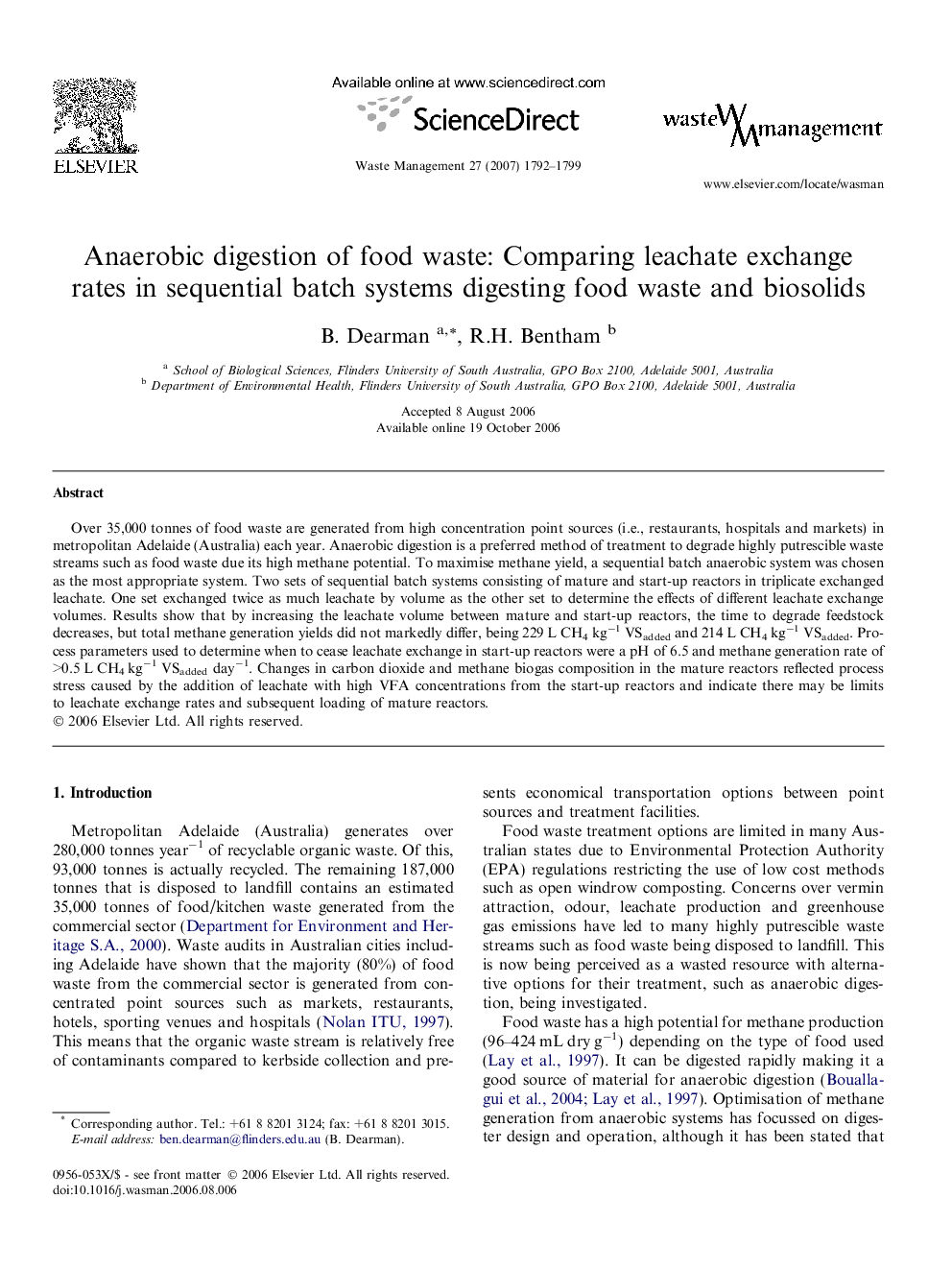| Article ID | Journal | Published Year | Pages | File Type |
|---|---|---|---|---|
| 4473751 | Waste Management | 2007 | 8 Pages |
Over 35,000 tonnes of food waste are generated from high concentration point sources (i.e., restaurants, hospitals and markets) in metropolitan Adelaide (Australia) each year. Anaerobic digestion is a preferred method of treatment to degrade highly putrescible waste streams such as food waste due its high methane potential. To maximise methane yield, a sequential batch anaerobic system was chosen as the most appropriate system. Two sets of sequential batch systems consisting of mature and start-up reactors in triplicate exchanged leachate. One set exchanged twice as much leachate by volume as the other set to determine the effects of different leachate exchange volumes. Results show that by increasing the leachate volume between mature and start-up reactors, the time to degrade feedstock decreases, but total methane generation yields did not markedly differ, being 229 L CH4 kg−1 VSadded and 214 L CH4 kg−1 VSadded. Process parameters used to determine when to cease leachate exchange in start-up reactors were a pH of 6.5 and methane generation rate of >0.5 L CH4 kg−1 VSadded day−1. Changes in carbon dioxide and methane biogas composition in the mature reactors reflected process stress caused by the addition of leachate with high VFA concentrations from the start-up reactors and indicate there may be limits to leachate exchange rates and subsequent loading of mature reactors.
